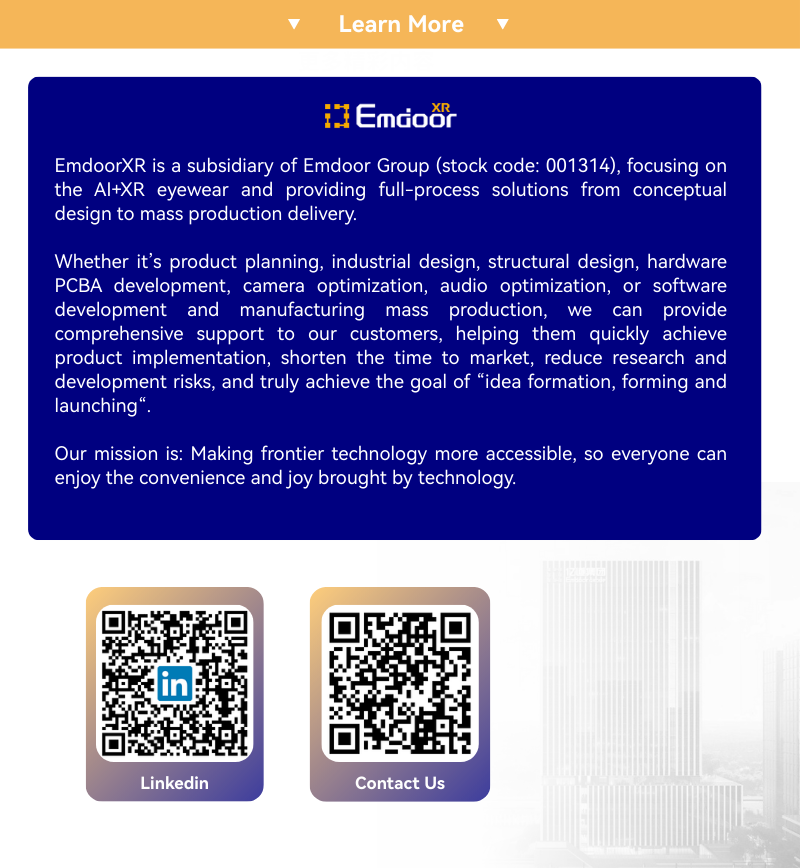LONG BEACH, CA – At the Augmented World Expo (AWE) 2025, which kicked off on June 10th, EmdoorXR’s SW3035 AI Glasses seized the spotlight with a powerful combination of a lightweight design and a solution, signaling a paradigm shift for the global XR industry.
A Global Tech Showcase at AWE 2025 Long Beach
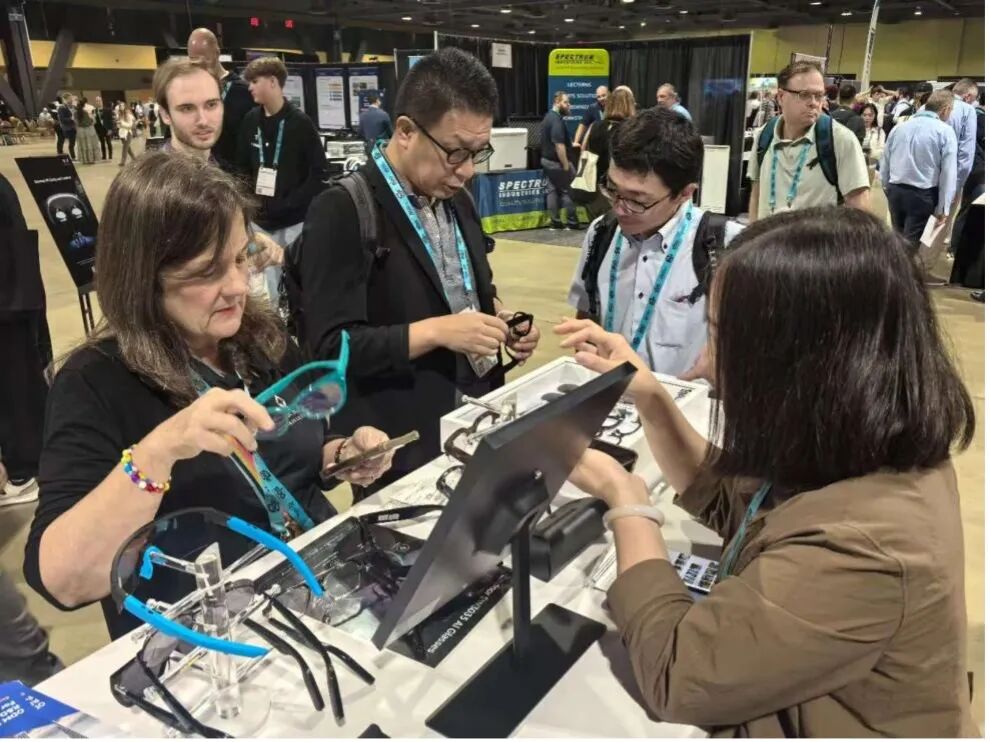
EmdoorXR’s booth (SW3035) became a major draw, with its hands-on experience zone attracting hundreds of industry professionals on the first day alone. The device shatters the stereotype of bulky smart glasses, boasting an ultra-light 39-gram body (excluding lenses) and sleek 6.9mm temples. Combined with compelling multi-modal interaction demos, the SW3035 is setting a new standard for the fusion of AI and eyewear.
More than just a product, EmdoorXR is offering a new model for rapid collaborative development, providing flexible, high-quality partnership options for companies across the XR supply chain, including optics, algorithms, and software.
The company’s leadership was further validated during Qualcomm’s main keynote address at AWE, where seven lightweight glasses products were showcased from six different companies. Two of these seven models were designed in collaboration with EmdoorXR.
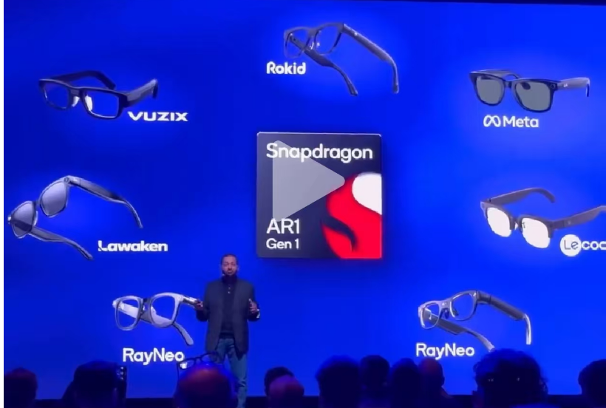
A Trilogy of Technological Evolution
The SW3035 is the culmination of a rapid, three-stage evolution that unfolded over the course of a single year.
1. CES 2025: The journey began with the SW3010, built on the Qualcomm AR1 chip platform. It featured integrated voice commands (with on-device noise and echo cancellation) and “Always-on” multi-modal control, powered by the proprietary JING OS 1.0. This model provided a full-link mass production solution that enabled clients to bring products to market quickly and cost-effectively.
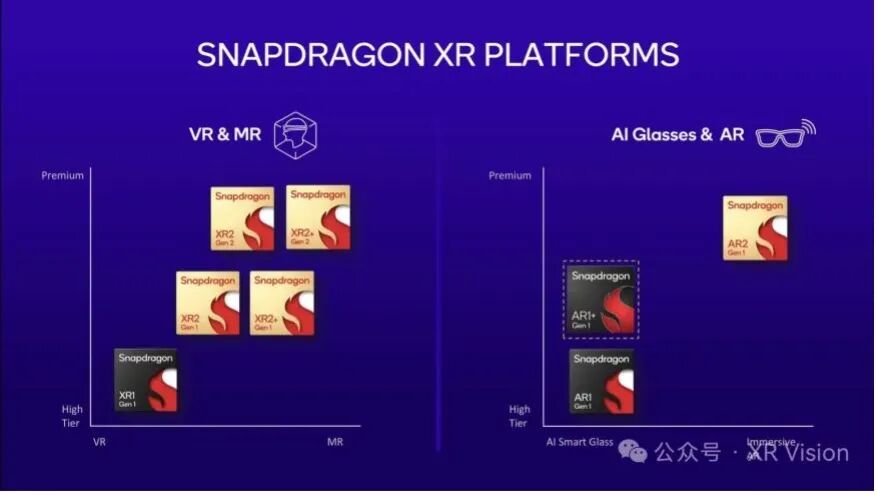
2. MWC 2025: Next came the SW3030 solution, which reduced the frame weight to a mere 39 grams (excluding lenses). It pioneered a “Cloud-Edge-Device-Wearable” collaborative architecture. This system processes basic AI tasks on the device itself while dynamically offloading complex computations to the cloud, achieving an impressive 4 hours of standalone battery life, extended to 36 hours with the charging case. The platform also introduced support for both Android and iOS.
3. AWE 2025: The SW3035 builds upon the technological foundation of the Qualcomm AR1 platform. By optimizing low-level drivers and sensor scheduling algorithms, it enhances the efficiency of on-device AI tasks—improving offline voice recognition speed by 40%—and reduces response latency. It also offers an improved SDK for B2B clients and is architected for a seamless future migration to the even smaller AR1+Gen1 platform.
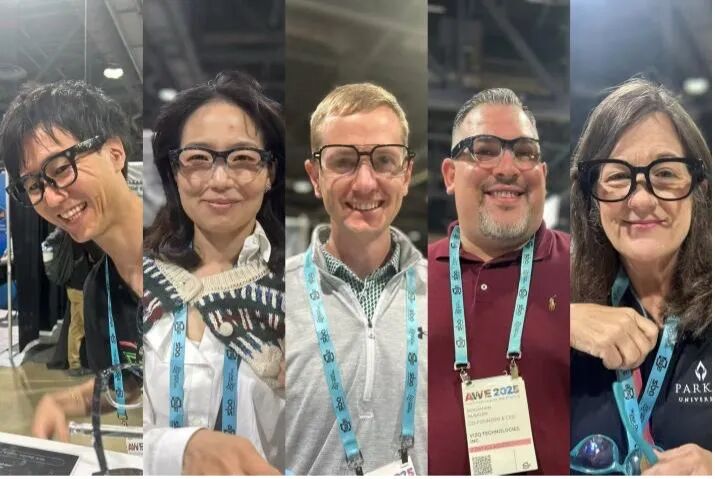
Inside the Full-Process Solution: Accelerating Time-to-Market
EmdoorXR operates on a core philosophy of “Glasses first, AI second.” This principle has led to the creation of the industry’s first highly efficient delivery model, directly addressing the pain points of long development cycles and prohibitive R&D costs. This model allows for mass production in as little as four months.
Modular Architecture
The design features a standardized mainboard paired with interchangeable frames and nose pad components. This allows clients to deeply customize the appearance to suit fashion-forward designs or accommodate prescription lenses. Through advanced hardware stacking, thermal simulation, and an AI Hub platform for large model integration, this modular approach slashes development costs by 60%-80% and significantly shortens development time.
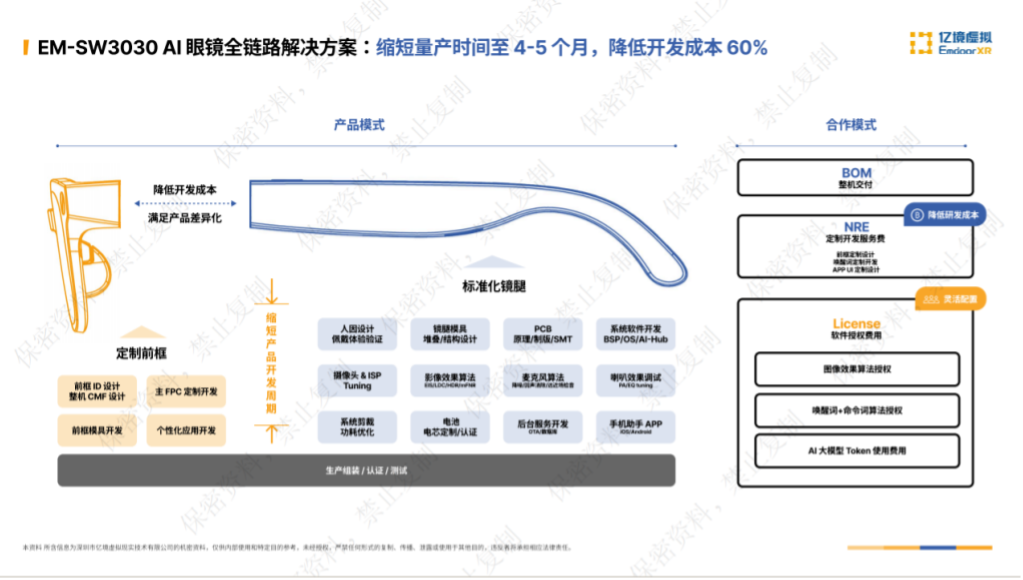
Closed-Loop Ecosystem Tools
- “AI Glasses” Companion App: A mobile assistant for both iOS and Android that handles device management and AI service coordination.
- Open Development Platform: EmdoorXR provides its AR1 series development board (EVB-AR1) and a full software development kit. These tools empower third-party developers to rapidly adapt and deploy applications, accelerating the growth of a robust developer ecosystem.
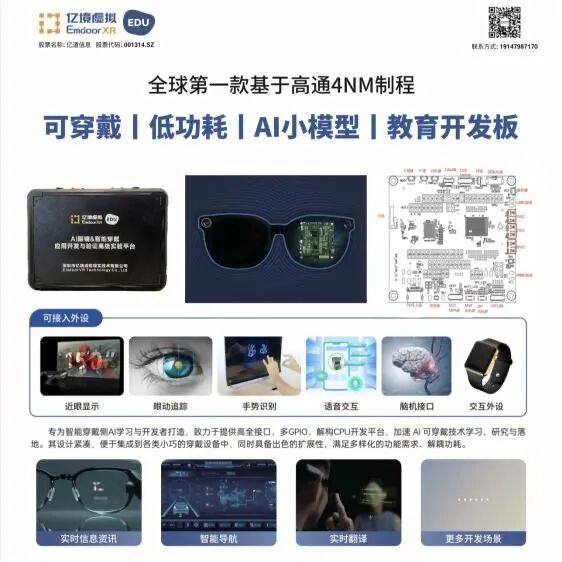
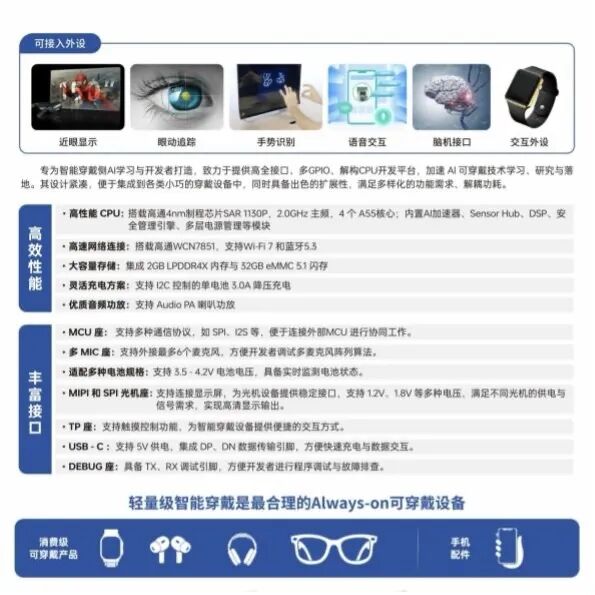
Hardware Cornerstone
- Qualcomm® AR1 Processor: A dedicated chip for AI glasses, providing powerful on-device AI computing for parallel task processing with a response latency of less than 0.5 seconds.
- Dual 14-bit ISP Imaging System: A 12-megapixel ultra-wide-angle camera enhanced with 3A algorithms and Electronic Image Stabilization (EIS), delivering a 40% improvement in low-light image clarity.
- Five-Microphone Array: Integrates seven core voice algorithms, including low-power voice activation, multiple noise cancellation systems, and dynamic audio capture optimization, ensuring highly robust voice interaction in any environment.
- Jing OS 1.2: A deeply customized system based on Android, balancing low power consumption with high extensibility to provide a flexible foundation for developer innovation.
Breaking Barriers: An AI Revolution from Consumers to Enterprise
The Consumer Experience
- Real-Time Virtual Companion: By integrating with Large Language Models like ChatGPT and DeepSeek, the glasses can provide real-time navigation, recipe guidance, and tourist information.
- Privacy and Security Architecture: The “Cloud-Edge-Device-Wearable” four-layer protection ensures user data is processed locally whenever possible. Looking ahead, EmdoorXR plans to launch an AI Home Compute Center in 2026 to further enhance data privacy.
►►►The Next-Generation AI Interface
“Technology should be invisible, and the experience utterly intuitive.”
— Shi Qing, General Manager of EmdoorXR and winner of the 2024 Golden V “Industry Person of the Year” Award)
EmdoorXR’s global journey represents more than a product victory; it signifies a leap for Chinese innovation from following trends to defining them. Fueled by the twin waves of consumer adoption and industrial digitalization, this AI-native eyewear, born with a “full-process” DNA, is rapidly turning the future of “intelligence at a glance” into a tangible reality.
